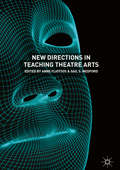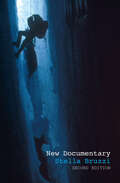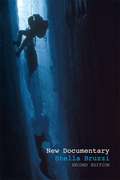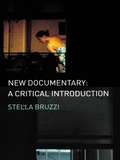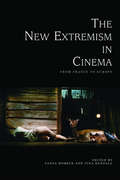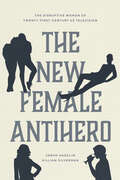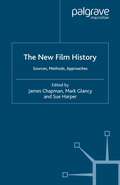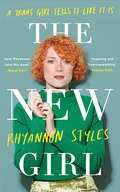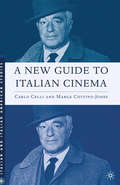- Table View
- List View
New Directions in Teaching Theatre Arts
by Anne Fliotsos Gail S. MedfordThis book reflects the changes in technology and educational trends (cross-disciplinary learning, entrepreneurship, first-year learning programs, critical writing requirements, course assessment, among others) that have pushed theatre educators to innovate, question, and experiment with new teaching strategies. The text focuses upon a firm practice-based approach that also reflects research in the field, offering innovative and proven methods that theatre educators may use to actively engage students and encourage student success. The sixteen essays in this volume are divided into five sections: Teaching with Digital Technology, Teaching in Response to Educational Trends, Teaching New Directions in Performance, Teaching Beyond the Traditional, and Teaching Collaboratively or Across Disciplines. Study of this book will provoke readers to question both teaching methods and curricula as they consider the ever-shifting arts landscape and the potential careers for theatre graduates.
New Directions in Teaching Theatre Arts
by Anne Fliotsos Gail S. MedfordThis book reflects the changes in technology and educational trends (cross-disciplinary learning, entrepreneurship, first-year learning programs, critical writing requirements, course assessment, among others) that have pushed theatre educators to innovate, question, and experiment with new teaching strategies. The text focuses upon a firm practice-based approach that also reflects research in the field, offering innovative and proven methods that theatre educators may use to actively engage students and encourage student success. The sixteen essays in this volume are divided into five sections: Teaching with Digital Technology, Teaching in Response to Educational Trends, Teaching New Directions in Performance, Teaching Beyond the Traditional, and Teaching Collaboratively or Across Disciplines. Study of this book will provoke readers to question both teaching methods and curricula as they consider the ever-shifting arts landscape and the potential careers for theatre graduates.
New Documentaries in Latin America (Global Cinema)
by Juan Carlos Rodríguez Vinicius NavarroExamining the vast breadth and diversity of contemporary documentary production, while also situating nonfiction film and video within the cultural, political, and socio-economic history of the region, this book addresses topics such as documentary aesthetics, indigenous media, and transnational filmmaking, among others.
New Documentary
by Stella BruzziPraise for New Documentary: 'It's refreshing to find a book that cuts through the tired old debates that have surrounded documentary film and television. It heralds a welcome new approach.' Sight and Sound 'Documentary practice changes so fast that books on the subject are often out of date before they are published. Bruzzi's achievement is to have understood the genre as an activity based on performance rather than observation. This is a fresh perspective which illuminates the fundamental shifts that will continue to take place in the genre as it enters its second century.' John Ellis, Professor of Media Arts, Royal Holloway, University of LondonNew Documentary provides a contemporary look at documentary and fresh and challenging ways of theorising the non-fiction film. As engaging as the original, this second edition features thorough updates to the existing chapters, as well as a brand new chapter on contemporary cinema release documentaries. This new edition includes: Contemporary films such as Capturing the Friedmans, Être et avoir, Farenheit 9/11, The Fog of War and Touching the Void as well as more canonical texts such as Hoop Dreams and Shoah Additional interviews with influential practitioners, such as director Michael Apted and producer Stephen Lambert A comprehensively revised discussion of modern observational documentary, including docusoaps, reality television and formatted documentaries The work of documentary filmmakers such as Nicholas Barker, Errol Morris, Nick Broomfield, Molly Dineen and Michael Moore and the work of Avant-Garde filmmakers such as Chris Marker and Patrick Keiller Gender identity, queer theory, performance, race and spectatorship. Bruzzi shows how theories of documentary filmmaking can be applied to contemporary texts and genres, and discusses the relationship between recent, innovative examples of the genre and the more established canon of documentary.
New Documentary
by Stella BruzziPraise for New Documentary: 'It's refreshing to find a book that cuts through the tired old debates that have surrounded documentary film and television. It heralds a welcome new approach.' Sight and Sound 'Documentary practice changes so fast that books on the subject are often out of date before they are published. Bruzzi's achievement is to have understood the genre as an activity based on performance rather than observation. This is a fresh perspective which illuminates the fundamental shifts that will continue to take place in the genre as it enters its second century.' John Ellis, Professor of Media Arts, Royal Holloway, University of LondonNew Documentary provides a contemporary look at documentary and fresh and challenging ways of theorising the non-fiction film. As engaging as the original, this second edition features thorough updates to the existing chapters, as well as a brand new chapter on contemporary cinema release documentaries. This new edition includes: Contemporary films such as Capturing the Friedmans, Être et avoir, Farenheit 9/11, The Fog of War and Touching the Void as well as more canonical texts such as Hoop Dreams and Shoah Additional interviews with influential practitioners, such as director Michael Apted and producer Stephen Lambert A comprehensively revised discussion of modern observational documentary, including docusoaps, reality television and formatted documentaries The work of documentary filmmakers such as Nicholas Barker, Errol Morris, Nick Broomfield, Molly Dineen and Michael Moore and the work of Avant-Garde filmmakers such as Chris Marker and Patrick Keiller Gender identity, queer theory, performance, race and spectatorship. Bruzzi shows how theories of documentary filmmaking can be applied to contemporary texts and genres, and discusses the relationship between recent, innovative examples of the genre and the more established canon of documentary.
New Documentary: A Critical Introduction
by Stella BruzziNew Documentary: A Critical Introduction provides a comprehensive account of the last two decades of documentary filmmaking in Britain, the US and Europe. Stella Bruzzi's engaging textbook discusses key genres, filmmakers, and issues for the study of non-fiction film and television, including:* key texts such as the Zapruder film of Kennedy's assassination, Shoah, Hoop Dreams and Michael Apted's 7 Up series* documentary genres, from current affairs programming to 'fly on the wall' documentaries to 'reality tv' series* the work of documentary filmmakers such as Emile de Antonio, Fred Wiseman, Nick Broomfield, Molly Dineen and Paul Watson* the work of avant-garde filmmakers such as Chris Marker, Patrick Keiller, Peter Greenaway and Wim Wenders, whose films challenge conventions of documentary filmmaking* movies based on historical events, such as 'JFK' and 'Nixon'* faux documentaries such as This is Spinal Tap, Bob Roberts and Man Bites Dog* gender identity, queer theory, performance, 'race' and spectatorship.Bruzzi shows how theories of documentary filmmaking can be applied to contemporary texts and genres, and discusses the relationship between recent, innovative examples of the genre and the more established canon of documentary.
New Documentary: A Critical Introduction
by Stella BruzziNew Documentary: A Critical Introduction provides a comprehensive account of the last two decades of documentary filmmaking in Britain, the US and Europe. Stella Bruzzi's engaging textbook discusses key genres, filmmakers, and issues for the study of non-fiction film and television, including:* key texts such as the Zapruder film of Kennedy's assassination, Shoah, Hoop Dreams and Michael Apted's 7 Up series* documentary genres, from current affairs programming to 'fly on the wall' documentaries to 'reality tv' series* the work of documentary filmmakers such as Emile de Antonio, Fred Wiseman, Nick Broomfield, Molly Dineen and Paul Watson* the work of avant-garde filmmakers such as Chris Marker, Patrick Keiller, Peter Greenaway and Wim Wenders, whose films challenge conventions of documentary filmmaking* movies based on historical events, such as 'JFK' and 'Nixon'* faux documentaries such as This is Spinal Tap, Bob Roberts and Man Bites Dog* gender identity, queer theory, performance, 'race' and spectatorship.Bruzzi shows how theories of documentary filmmaking can be applied to contemporary texts and genres, and discusses the relationship between recent, innovative examples of the genre and the more established canon of documentary.
New Documentary Ecologies: Emerging Platforms, Practices and Discourses
by Kate Nash Craig Hight Catherine SummerhayesProviding a unique collection of perspectives on the persistence of documentary as a vital and dynamic media form within a digital world, New Documentary Ecologies traces this form through new opportunities of creating media, new platforms of distribution and new ways for audiences to engage with the real.
The New Elizabethan Age: Culture, Society and National Identity after World War II (International Library of Twentieth Century History)
by Irene Morra Rob GossedgeIn the first half of the twentieth century, many writers and artists turned
The New Extremism in Cinema: From France to Europe
by Tanya C Horeck Tina KendallExplosive images of sex and violence in films by directors such as Catherine Breillat, Gaspar Noé, Michael Haneke and Lars von Trier have attracted media attention for the ways in which they seek to shock and provoke the spectator into powerful affective and visceral responses. This first collection of essays devoted to the new extremism in contemporary European cinema critically interrogates this highly contentious body of work and demonstrates that these films and the controversies they engender are indispensable to the critical task of rethinking the terms of spectatorship. Through critical discussions of key films and directors, this book sheds new light on cutting-edge debates in Film Studies regarding sexuality, violence and spectatorship, affect and ethics, and the political dimensions of extreme cinema. Including important new work from internationally renowned scholars Martin Barker and Martine Beugnet, as well as combining a range of approaches to extreme cinema across audience research and theories of spectator ship, this exploration of the darkest side of cinema will be an invaluable resource for film scholars and students.
The New Extremism in Cinema: From France to Europe
by Tanya Horeck Tina KendallExplosive images of sex and violence characterise what has come to be known as the 'new extremism' in contemporary European cinema. This collection of essays is devoted to the new extremism in contemporary European cinema and will critically interrogate this highly contentious body of work.
The New Female Antihero: The Disruptive Women of Twenty-First-Century US Television
by Sarah Hagelin Gillian SilvermanThe New Female Antihero examines the hard-edged spies, ruthless queens, and entitled slackers of twenty-first-century television. The last ten years have seen a shift in television storytelling toward increasingly complex storylines and characters. In this study, Sarah Hagelin and Gillian Silverman zoom in on a key figure in this transformation: the archetype of the female antihero. Far from the sunny, sincere, plucky persona once demanded of female characters, the new female antihero is often selfish and deeply unlikeable. In this entertaining and insightful study, Hagelin and Silverman explore the meanings of this profound change in the role of women characters. In the dramas of the new millennium, they show, the female antihero is ambitious, conniving, even murderous; in comedies, she is self-centered, self-sabotaging, and anti-aspirational. Across genres, these female protagonists eschew the part of good girl or role model. In their rejection of social responsibility, female antiheroes thus represent a more profound threat to the status quo than do their male counterparts. From the devious schemers of Game of Thrones, The Americans, Scandal, and Homeland, to the joyful failures of Girls, Broad City, Insecure, and SMILF, female antiheroes register a deep ambivalence about the promises of liberal feminism. They push back against the myth of the modern-day super-woman—she who “has it all”—and in so doing, they give us new ways of imagining women’s lives in contemporary America.
The New Female Antihero: The Disruptive Women of Twenty-First-Century US Television
by Sarah Hagelin Gillian SilvermanThe New Female Antihero examines the hard-edged spies, ruthless queens, and entitled slackers of twenty-first-century television. The last ten years have seen a shift in television storytelling toward increasingly complex storylines and characters. In this study, Sarah Hagelin and Gillian Silverman zoom in on a key figure in this transformation: the archetype of the female antihero. Far from the sunny, sincere, plucky persona once demanded of female characters, the new female antihero is often selfish and deeply unlikeable. In this entertaining and insightful study, Hagelin and Silverman explore the meanings of this profound change in the role of women characters. In the dramas of the new millennium, they show, the female antihero is ambitious, conniving, even murderous; in comedies, she is self-centered, self-sabotaging, and anti-aspirational. Across genres, these female protagonists eschew the part of good girl or role model. In their rejection of social responsibility, female antiheroes thus represent a more profound threat to the status quo than do their male counterparts. From the devious schemers of Game of Thrones, The Americans, Scandal, and Homeland, to the joyful failures of Girls, Broad City, Insecure, and SMILF, female antiheroes register a deep ambivalence about the promises of liberal feminism. They push back against the myth of the modern-day super-woman—she who “has it all”—and in so doing, they give us new ways of imagining women’s lives in contemporary America.
The New Film History: Sources, Methods, Approaches
by J. Chapman M. Glancy S. HarperThe first major overview of the field of film history in twenty years, this book offers a wide-ranging account of the methods, sources and approaches used by modern film historians. The key areas of research are analysed, alongside detailed case studies centred on well-known American, Australian, British and European films.
The New Generation in Chinese Animation (World Cinema)
by Shaopeng ChenIn 1995 Chinese animated filmmaking ceased to be a state-run enterprise and was plunged into the free market. Using key animated films as his case studies, Shaopeng Chen examines new generation Chinese animation in its aesthetic and industrial contexts. He argues that, unlike its predecessors, this new generation does not have a distinctive national identity, but represents an important stage of diversity and exploration in the history of Chinese animation. Chen identifies distinct characteristics of new generation filmmaking, including an orientation towards young audiences and the recurring figure of the immortal monkey-like Sun Wukong. He explores how films such as Lotus Lantern/Baolian Deng (1999) responded to competition from American imports such as The Lion King (1994), retaining Chinese iconography while at the same time adopting Hollywood aesthetics and techniques. Addressing the series Boonie Bears/Xiong Chumo (2014-5), Chen focuses on the films' adaptation from the original TV series, and how the films were promoted across generations and by means of both online and offline channels. Discussing the series Kuiba/Kui Ba (2011, 2013, 2014), Chen examines Vasoon Animation Studio's ambitious attempt to create the first Chinese-style high fantasy fictional universe, and considers why the first film was a critical success but a failure at the box-office. He also explores the relationship between Japanese anime and new generation Chinese animation. Finally, Chen considers how word-of-mouth social media engagement lay behind the success of Monkey King: Hero is Back (2015).
The New Generation in Chinese Animation (World Cinema)
by Shaopeng ChenIn 1995 Chinese animated filmmaking ceased to be a state-run enterprise and was plunged into the free market. Using key animated films as his case studies, Shaopeng Chen examines new generation Chinese animation in its aesthetic and industrial contexts. He argues that, unlike its predecessors, this new generation does not have a distinctive national identity, but represents an important stage of diversity and exploration in the history of Chinese animation. Chen identifies distinct characteristics of new generation filmmaking, including an orientation towards young audiences and the recurring figure of the immortal monkey-like Sun Wukong. He explores how films such as Lotus Lantern/Baolian Deng (1999) responded to competition from American imports such as The Lion King (1994), retaining Chinese iconography while at the same time adopting Hollywood aesthetics and techniques. Addressing the series Boonie Bears/Xiong Chumo (2014-5), Chen focuses on the films' adaptation from the original TV series, and how the films were promoted across generations and by means of both online and offline channels. Discussing the series Kuiba/Kui Ba (2011, 2013, 2014), Chen examines Vasoon Animation Studio's ambitious attempt to create the first Chinese-style high fantasy fictional universe, and considers why the first film was a critical success but a failure at the box-office. He also explores the relationship between Japanese anime and new generation Chinese animation. Finally, Chen considers how word-of-mouth social media engagement lay behind the success of Monkey King: Hero is Back (2015).
The New Girl: A Trans Girl Tells It Like It Is
by Rhyannon Styles'Inspiring and heart-wrenching' Paloma Faith 'Love Rhyannon. Love this book' Grace Dent The remarkable transgender memoir you won't stop hearing about. Rhyannon Styles will do for transgender what Matt Haig did for mental health. Elle columnist Rhyannon Styles tells her unforgettable life story in THE NEW GIRL, reflecting on her past and charting her incredible journey from male to female. A raw, frank and utterly moving celebration of life.Imagine feeling lost in your own body. Imagine spending years living a lie, denying what makes you 'you'. This was Ryan's reality. He had to choose: die as a man or live as a woman.In 2012, Ryan chose Rhyannon. At the age of thirty she began her transition, taking the first steps on the long road to her true self.Rhyannon holds nothing back in THE NEW GIRL, a heartbreakingly honest telling of her life. Through her catastrophic lows and incredible highs, she paints a glorious technicolour picture of what it's like to be transgender. From cabaret drag acts, brushes with celebrity and Parisian clown school, to struggles with addiction and crippling depression, Rhyannon's story is like nothing you've read before.Narrated with searing honesty, humour and poignancy, THE NEW GIRL is a powerful book about being true to ourselves, for anyone who's ever felt a little lost.
A New Guide to Italian Cinema (Italian and Italian American Studies)
by C. Celli M. Cottino-JonesThis book is a complete reworking and update of Marga Cottino-Jones' popular A Student's Guide to Italian Film (1983, 1993) . This guide retains earlier editions' interest in renowned films and directors but is also attentive to the popular films which achieved box office success among the public.
A New History of British Documentary
by J. ChapmanA New History of British Documentary is the first comprehensive overview of documentary production in Britain from early film to the present day. It covers both the film and television industries and demonstrates how documentary practice has adapted to changing institutional and ideological contexts.
A New History of Documentary Film: Second Edition
by Betsy A. McLaneA New History of Documentary Film, Second Edition offers a much-needed resource, considering the very rapid changes taking place within documentary media. Building upon the best-selling 2005 edition, Betsy McLane keeps the same chronological examination, factual reliability, ease of use and accessible prose style as before, while also weaving three new threads - Experimental Documentary, Visual Anthropology and Environmental/Nature Films - into the discussion. She provides emphasis on archival and preservation history, present practices, and future needs for documentaries. Along with preservation information, specific problems of copyright and fair use, as they relate to documentary, are considered. Finally, A History of Documentary Film retains and updates the recommended readings and important films and the end of each chapter from the first edition, including the bibliography and appendices. Impossible to talk learnedly about documentary film without an audio-visual component, a companion website will increase its depth of information and overall usefulness to students, teachers and film enthusiasts.
A New History of Documentary Film: Second Edition
by Betsy A. McLaneA New History of Documentary Film, Second Edition offers a much-needed resource, considering the very rapid changes taking place within documentary media. Building upon the best-selling 2005 edition, Betsy McLane keeps the same chronological examination, factual reliability, ease of use and accessible prose style as before, while also weaving three new threads - Experimental Documentary, Visual Anthropology and Environmental/Nature Films - into the discussion. She provides emphasis on archival and preservation history, present practices, and future needs for documentaries. Along with preservation information, specific problems of copyright and fair use, as they relate to documentary, are considered. Finally, A History of Documentary Film retains and updates the recommended readings and important films and the end of each chapter from the first edition, including the bibliography and appendices. Impossible to talk learnedly about documentary film without an audio-visual component, a companion website will increase its depth of information and overall usefulness to students, teachers and film enthusiasts.
A New History of Documentary Film: Second Edition
by Betsy A. McLaneA New History of Documentary Film includes new research that offers a fresh way to understand how the field began and grew. Retaining the original edition's core structure, there is added emphasis of the interplay among various approaches to documentaries and the people who made them. This edition also clearly explains the ways that interactions among the shifting forces of economics, technology, and artistry shape the form. New to this edition:- An additional chapter that brings the story of English language documentary to the present day- Increased coverage of women and people of color in documentary production- Streaming- Black Lives Matter- Animated documentaries- List of documentary filmmakers, organized chronologically by the years of their activity in the field
A New History of Documentary Film
by Betsy A. McLaneA New History of Documentary Film includes new research that offers a fresh way to understand how the field began and grew. Retaining the original edition's core structure, there is added emphasis of the interplay among various approaches to documentaries and the people who made them. This edition also clearly explains the ways that interactions among the shifting forces of economics, technology, and artistry shape the form. New to this edition:- An additional chapter that brings the story of English language documentary to the present day- Increased coverage of women and people of color in documentary production- Streaming- Black Lives Matter- Animated documentaries- List of documentary filmmakers, organized chronologically by the years of their activity in the field
A New History of Japanese Cinema
by Isolde StandishIn A New History of Japanese Cinema Isolde Standish focuses on the historical development of Japanese film. She details an industry and an art form shaped by the competing and merging forces of traditional culture and of economic and technological innovation. Adopting a thematic, exploratory approach, Standish links the concept of Japanese cinema as a system of communication with some of the central discourses of the twentieth century: modernism, nationalism, humanism, resistance, and gender. After an introduction outlining the earliest years of cinema in Japan, Standish demonstrates cinema's symbolic position in Japanese society in the 1930s - as both a metaphor and a motor of modernity. Moving into the late thirties and early forties, Standish analyses cinema's relationship with the state-focusing in particular on the war and occupation periods. The book's coverage of the post-occupation period looks at "romance" films in particular. Avant-garde directors came to the fore during the 1960s and early seventies, and their work is discussed in depth. The book concludes with an investigation of genre and gender in mainstream films of recent years. In grappling with Japanese film history and criticism, most western commentators have concentrated on offering interpretations of what have come to be considered "classic" films. A New History of Japanese Cinema takes a genuinely innovative approach to the subject, and should prove an essential resource for many years to come.
New Hollywood Cinema: An Introduction
by Geoff KingWhat exactly is New Hollywood? - is the first question answered by Geoff King in his lively and accessible introduction to modern Hollywood cinema and its films.In the expanding literature on this area, New Hollywood Cinema fills a gap by offering a single, up-to-date volume covering the ground coherently and accessibly.From the radical gestures of the 'Hollywood Renaissance' of the late 1960s and early 1970s to the current dominance of the corporate blockbuster, this book focuses on the interactions between the different levels of the film industry. Studios are now merely one part of the broader ventures of huge media conglomerates. Hollywood is over-run by the demands of publicity and marketing. It also takes its cue from much TV and filmed advertising. How do these new developments shape the form and content of the films we see? King takes a look - bringing examples from all the different genres of Hollywood films to bear on the issues raised. Numerous case-studies of films, film-makers and production companies are used to illustrate these complex but very well-rendered ideas.
